Are you looking to ditch your 9 to 5 routine and try something new? The gig economy has exploded into a billion-dollar business, with leaders such as Uber and Airbnb being valued at $120 billion and $31 billion, respectively.
Research shows that, by 2020, the gig economy—made up of shorter-term jobs— will be a primary income source for 43% of the American workforce, up from 34% in 2017. Increased demand for work flexibility has driven the growth of this market, even though salaries are, in general, lower than those of typical long-term jobs.
This prompted Fit Small Business to look into the best states for gig economy jobs in 2019. To determine the states with the best opportunities, we analyzed and weighed the following metrics:
- Legal impediments to gig economy work: 20%
- Market size: 20%
- Gig economy workers’ median income: 20%
- Tourism potential: 20%
- Income tax: 10%
- Out-of-pocket cost of health insurance:10%
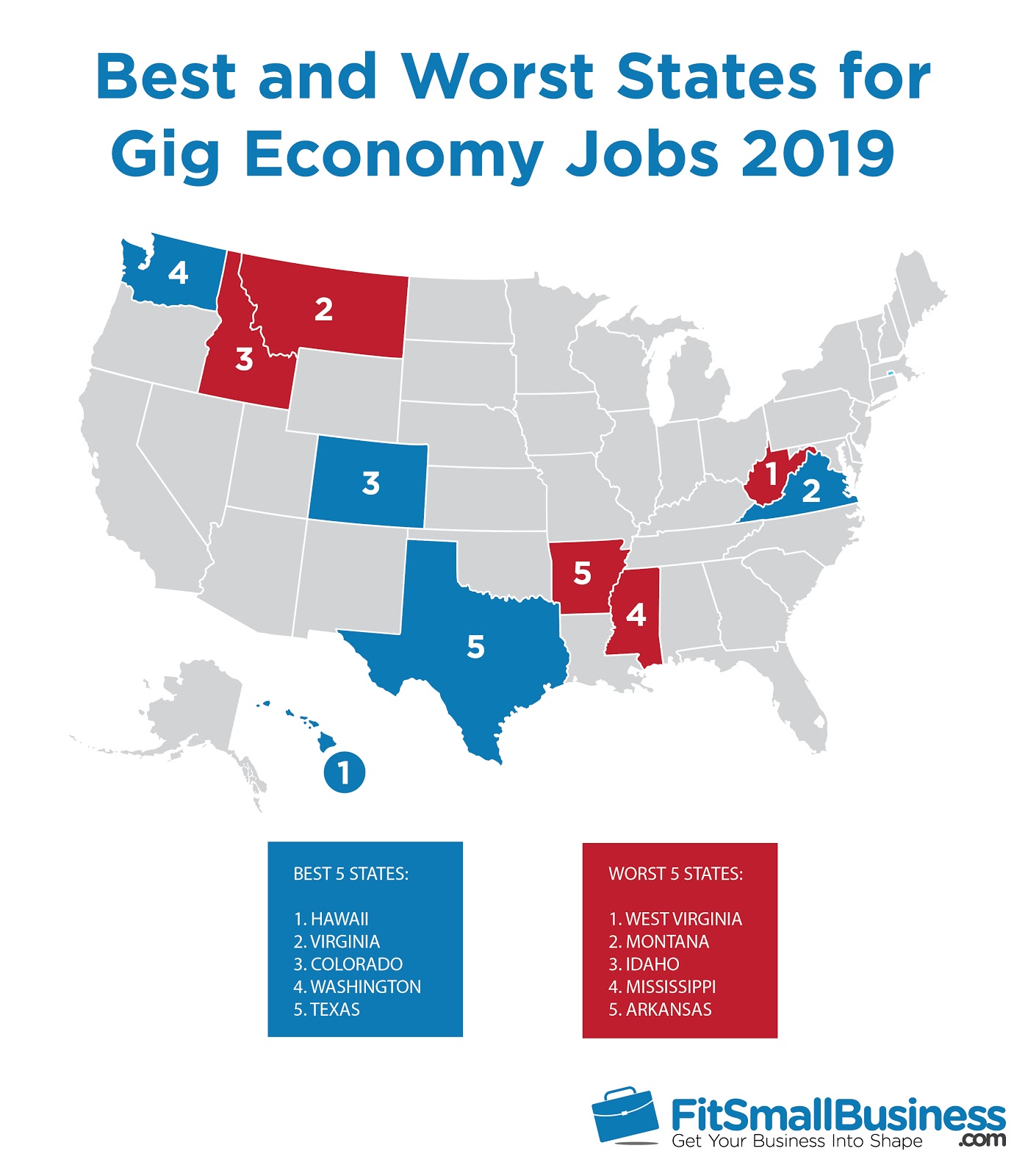
Best and worst states for gig economy jobs 2019
5 Best States for Gig Economy Jobs
The best states for gig economy jobs have a proven market size with a high amount of tourism, a large population, and high population density along with a positive climate for independent work such as a low average cost of health insurance and a low income tax The five best states for gig economy jobs are Hawaii, Virginia, Colorado, Washington, and Texas.
1. Hawaii

Oahu, Hawaii
Gig economy workers will be hard-pressed to find a state better than Hawaii, which lands at No. 1 on our list. This holiday hotspot gives gig economy workers an abundance of work opportunities and a vacation lifestyle. It has the second-highest median income in the nation at $73,486 and the lowest average cost of health insurance in the nation at just $411 per person, per month—21% below the national average of $510.
The combination of very high tourism rates, low cost of health insurance, and high median income push it to the number one position. It ranks No. 3 for most tourism in the country, behind Florida (No. 1) and California (No. 2). In fact, it had 13.2 million visitors in 2018, equaling out to around 242,629 tourists per day, according to the Honolulu Star-Advertiser. Although Hawaii doesn’t have the highest population in the nation, its vast tourism creates demand for the gig economy.
2. Virginia

Norfolk, Virginia
Virginia is the second-best state for gig economy jobs. It boasts the nation’s eighth-highest median income at $66,262, lower-than-average cost of health insurance at $475, and the 12th-highest population of 8,470,020 people with a population density of 216 people per square mile—the 13th highest in the United States.
Given its high ranking across all categories from income to population, it’s little wonder Virginia lands at No. 2 on our list. The combination of a large number of possible gig economy patrons, given its large population, on top of a higher-than-average median household income of $66,262, shows that Virginia isn’t just for lovers, but it’s also a good place for those looking to work in the gig economy.
3. Colorado
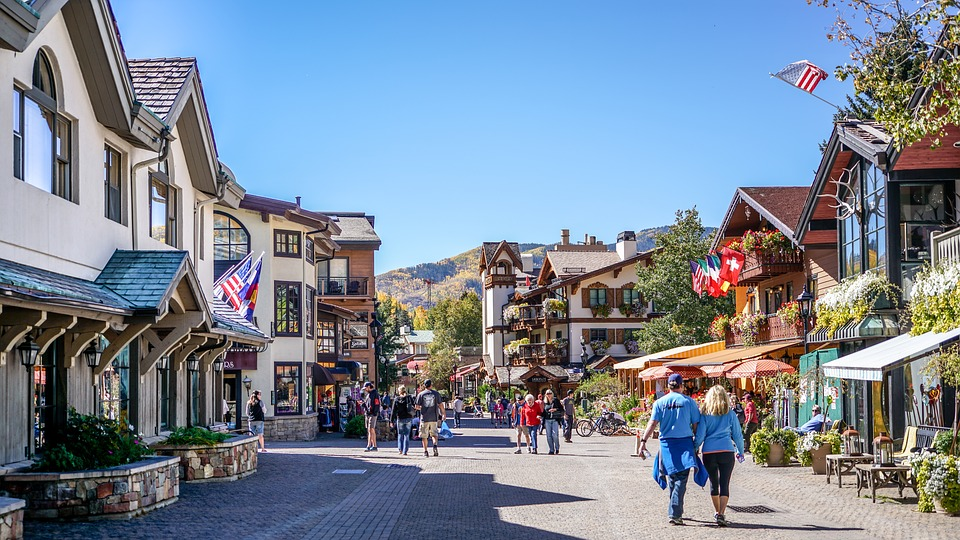
Vail, Colorado
Colorado, a haven for adventure tourism and home to more than 5.6 million people, lands at No. 3 as the best state for gig economy jobs. Similar to top-ranked Hawaii, it has the fifth-highest amount of tourism in the nation with more than 82.4 million visitors, which generated a total of $1.2 billion in tax revenue, according to the Colorado Tourism Office. For gig economy workers, Colorado not only offers a sizable market but a great place to have a flexible job and part-time work.
To add to Colorado’s healthy market size, it has an above-average median household income of $63,909, meaning residents have more to spend on gig economy workers. Colorado also has a low income tax rate of 4.63% and a below-average cost of health insurance at $485 per person, per month. This means more money left in your pocket after hauling Uber and Lyft riders around.
4. Washington

Seattle, Washington
Washington state is the fourth-best state for gig economy jobs. With a high median income of $64,129, a population nearly 1 million above the national average, no gig economy regulation, and a 0% income tax rate, it’s a good environment for a gig economy jobs. What’s more, Seattle is now rivaling San Francisco as a tech hub, making it a terrific place for those seeking gig economy work to supplement startup efforts.
The state is seeing continued growth at a rapid rate of 1.6%, double that of the national average, according to the Office of Financial Management. This population increase furthers the demand for gig economy services. One downside of Washington is that its average health insurance cost is high at $546 per person, above the nationwide average of $513. However, this is offset by a 0% income tax.
5. Texas
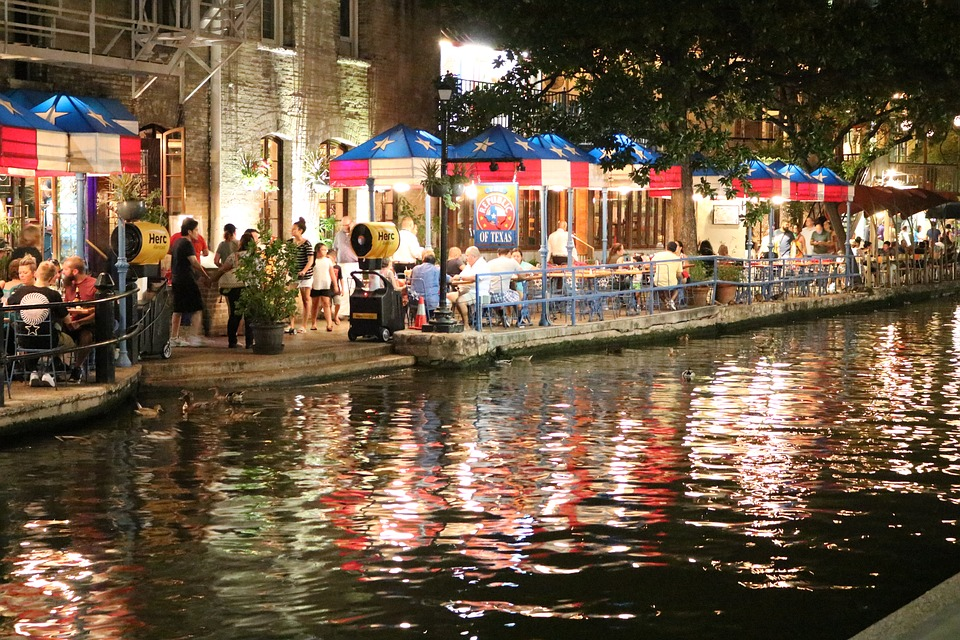
San Antonio, Texas
Texas is proving that perhaps bigger is better as it lands at the No. 5 spot for the best states for gig economy jobs. It has the nation’s second-highest population at more than 28 million, a below-average cost of health insurance at $480 per person, an above-average amount of tourism, and a business-friendly tax climate with a 0% income tax.
What Texas also has that other states don’t is a large number of millennials. According to the Houston Chronicle, Texas is home to three of the top five cities where millennials are moving. Why does this matter? Younger generations tend to be early adopters of gig economy tech, so a market with more millennials may mean more demand for gig economy services.
5 Worst States for Gig Economy Jobs
The worst states for gig economy jobs are those that have very little opportunity for gig economy work given a very small market size with very little tourism and a very low population density, along with a high cost of being an independent contractor with high health insurance costs and high income taxes. The five worst states in 2019 for gig economy jobs are West Virginia, Montana, Idaho, Mississippi, and Arkansas.
1. West Virginia
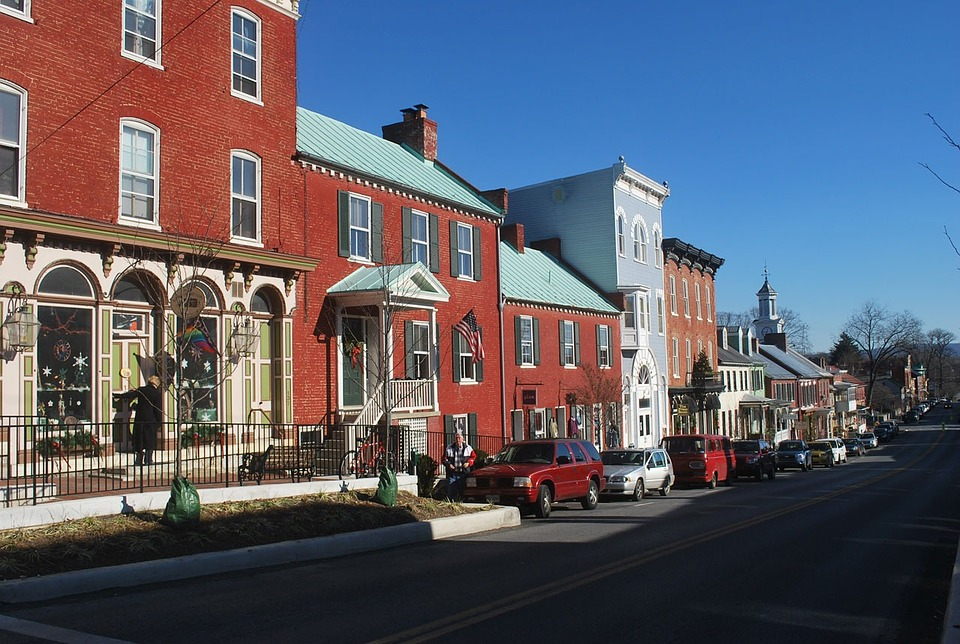
Shepherdstown, West Virginia
West Virginia is the nation’s worst state for gig economy jobs, in stark contrast to its neighbor Virginia, which landed in the top five. The reason it ranks so poorly is primarily due to having a very low population of just 1,815,857 residents, a low median income of $42,019, a low amount of tourism, and a high cost of health insurance at $561—$50 more per month than the national average.
All of this data reveals that West Virginia has, comparatively, a smaller pool of gig economy patrons and a high cost of living. Fortunately, however, devoted gig economy workers don’t have to go far for better opportunities—they can take their chances to the south and east in No. 2-ranked Virginia.
2. Montana

Lake McDonald, Montana
The picturesque Rocky Mountains and the Great Plains may be an adventure lover’s dream, but not for those looking to work in the gig economy; indeed, Montana is the second-worst state for gig economy jobs. A low population of just 1,050,493 in an expansive state means a very low population density. There are just seven people per square mile, to be exact. This is bad news for anyone looking for a gig economy jobs as there isn’t a central market for it.
What makes Montana even worst for gig economy jobs is that it has a high cost of health insurance at $555 per person, so not only are there very few gig economy opportunities, but it’s also expensive to live and work there. Those who love Montana and desire flexible work might want to consider a remote job instead of gigging.
3. Idaho
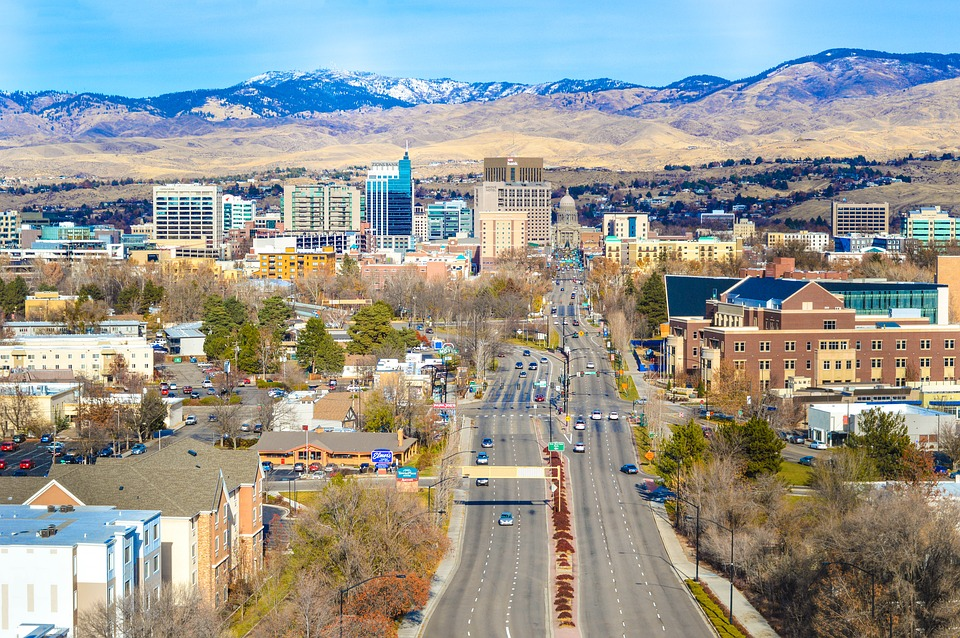
Boise, Idaho
Idaho is the third-worst state in the U.S. for gig economy jobs, suffering from the same problems as Montana. The state doesn’t have a sizable market as it has just 1,716,943 residents and a low population density of 21 people per square mile—162% lower than the national average of 203. It also has one of the lowest amounts of tourism in the nation, so there are neither many people living in Idaho nor visiting Idaho.
Where Idaho does stand out is in its low cost of health insurance—the second lowest in the country at just $415 per person, per month. This may be offset by the higher-than-average income tax rate of 7.4%, however. Those keen to pursue a gig economy job will find Boise to be the best option as it highest the highest population of any city in Idaho and has a number of colleges in the area, opening the door to younger people’s use of gig services.
4. Mississippi

Jackson, Mississippi
Mississippi is the country’s fourth-worst state for gig economy jobs. This southern state has a lot of lows—starting with a low rate of tourism, despite its white sand beaches and turquoise waters along the Gulf of Mexico. It also has a small population–less than half of the national average population at slightly less than 3 million—and a low population density of 64 people per square mile. On top of that, it also has the lowest median household income in the nation at $40,593.
The combination of a low population and population density, combined with low tourism rates, means Mississippi has a small market opportunity for those in the gig economy. Add in that those who do live here have the lowest median income—meaning they may have less to spend on gig economy services—and you have the makings of a poor gig economy state.
5. Arkansas

Lake Dardanelle State Park, Arkansas
Arkansas is the fifth-worst state for gig economy jobs, ahead of Mississippi by just a fraction of a point. Arkansas has nearly identical data as Mississippi with a population just about half that of the national average, the second-lowest median household income—just $1,500 higher than Mississippi, which has the lowest—and a low population density with just two more people per square mile than Mississippi.
Although Arkansas lacks a sizable market opportunity for those in the gig economy—given its low population and limited tourism—like all states in the bottom five, it has no legal limitations on gig economy work. That’s small comfort, however, as gig economy workers may likely still struggle to get by in Arkansas.
Data Chart With List of All 50 States
| STATE |
20% |
10% |
20% |
10% |
20% |
20% |
|
|
|---|---|---|---|---|---|---|---|---|
| Hawaii |
|
|
|
|
|
|
|
|
| Virginia |
|
|
|
|
|
|
|
|
| Colorado |
|
|
|
|
|
|
|
|
| Washington |
|
|
|
|
|
|
|
|
| Texas |
|
|
|
|
|
|
|
|
| Florida |
|
|
|
|
|
|
|
|
| Pennsylvania |
|
|
|
|
|
|
|
|
| Massachusetts |
|
|
|
|
|
|
|
|
| California |
|
|
|
|
|
|
|
|
| Maryland |
|
|
|
|
|
|
|
|
| Michigan |
|
|
|
|
|
|
|
|
| Tennessee |
|
|
|
|
|
|
|
|
| Arizona |
|
|
|
|
|
|
|
|
| Illinois |
|
|
|
|
|
|
|
|
| Georgia |
|
|
|
|
|
|
|
|
| New Jersey |
|
|
|
|
|
|
|
|
| North Carolina |
|
|
|
|
|
|
|
|
| Ohio |
|
|
|
|
|
|
|
|
| Utah |
|
|
|
|
|
|
|
|
| Alaska |
|
|
|
|
|
|
|
|
| Connecticut |
|
|
|
|
|
|
|
|
| New York |
|
|
|
|
|
|
|
|
| Minnesota |
|
|
|
|
|
|
|
|
| New Hampshire |
|
|
|
|
|
|
|
|
| Wisconsin |
|
|
|
|
|
|
|
|
| Nevada |
|
|
|
|
|
|
|
|
| Missouri |
|
|
|
|
|
|
|
|
| Kentucky |
|
|
|
|
|
|
|
|
| Indiana |
|
|
|
|
|
|
|
|
| Alabama |
|
|
|
|
|
|
|
|
| Delaware |
|
|
|
|
|
|
|
|
| Rhode Island |
|
|
|
|
|
|
|
|
| South Carolina |
|
|
|
|
|
|
|
|
| Wyoming |
|
|
|
|
|
|
|
|
| Kansas |
|
|
|
|
|
|
|
|
| Maine |
|
|
|
|
|
|
|
|
| North Dakota |
|
|
|
|
|
|
|
|
| South Dakota |
|
|
|
|
|
|
|
|
| Oregon |
|
|
|
|
|
|
|
|
| Oklahoma |
|
|
|
|
|
|
|
|
| Iowa |
|
|
|
|
|
|
|
|
| Louisiana |
|
|
|
|
|
|
|
|
| Vermont |
|
|
|
|
|
|
|
|
| New Mexico |
|
|
|
|
|
|
|
|
| Nebraska |
|
|
|
|
|
|
|
|
| Arkansas |
|
|
|
|
|
|
|
|
| Mississippi |
|
|
|
|
|
|
|
|
| Idaho |
|
|
|
|
|
|
|
|
| Montana |
|
|
|
|
|
|
|
|
| West Virginia |
|
|
|
|
|
|
|
|
Click here to see all data considered in our study.
Methodology
All 50 states were ranked from best to worst for gig economy jobs based on six metrics. These include legal limitations, population, tourism, household income, income tax, and cost of health insurance.
Legal: 20%
To be deemed a good state for gig economy jobs, we sought states that do not highly regulate the gig economy. States with highly regulated, or illegal, gig industries or companies create difficulties for gig economy workers or eliminate opportunities outright. We used legal data from Conde Nast Traveler and Governing.
Population: 20%
Population by state was used as an indicator of potential market size. The gig economy is based on a peer-to-peer marketplace, so a higher population is indicative of higher potential gigging opportunities. We used overall populations in our rankings, as provided by WorldAtlas, and population density as provided by Statista.
Tourism: 20%
A large portion of the gig economy relies on tourism, so we looked at how each state ranks in terms of the amount of tourism they receive each year as provided by data from Simple Most.
Median Household Income: 20%
To qualify a potential market further, we analyzed median household income by state as provided by Money. This helps to indicate whether or not a population has the disposable income to be customers in the gig economy.
Income Tax: 10%
Income tax impacts how much money a worker actually takes home, and this varies widely from state to state—from 0% to more than 13%. We considered each state’s level of income tax, as provided by Business Insider, to determine which provides the best tax climate for gig economy workers, who are considered independent contractors.
Cost of Health Insurance: 10%
Paying for health insurance out-of-pocket is one of the downsides to part-time and independent contract work. This cost varies widely from state-to-state and impacts the profitability of gig economy workers. We collected our data on the average cost of health insurance premiums per person, per month, from a study from United Benefit Advisors.
Bottom Line: Best & Worst States for Gig Economy Jobs
Gig economy jobs may be nearly everywhere, although gig economy jobs that rake in an income aren’t as widespread. The gig economy depends on people, and it needs both buyers and providers to work, so states with more people—particularly people with above average incomes—low income tax, and low health insurance premiums mean greater opportunity for serious gigging income.
Read More
0 تعليقات